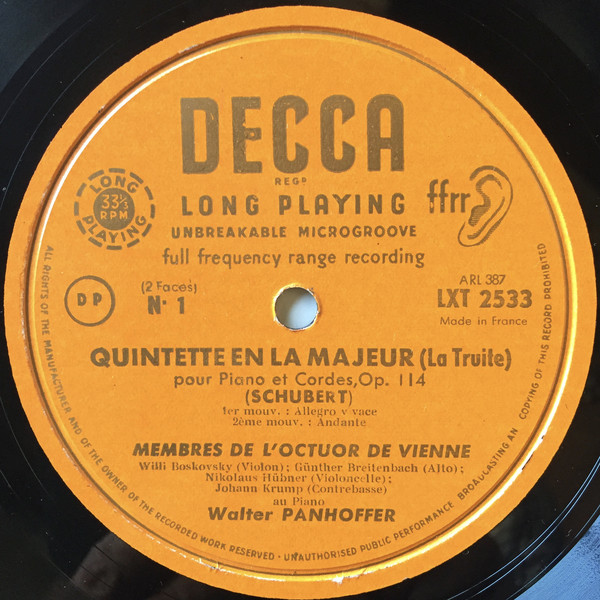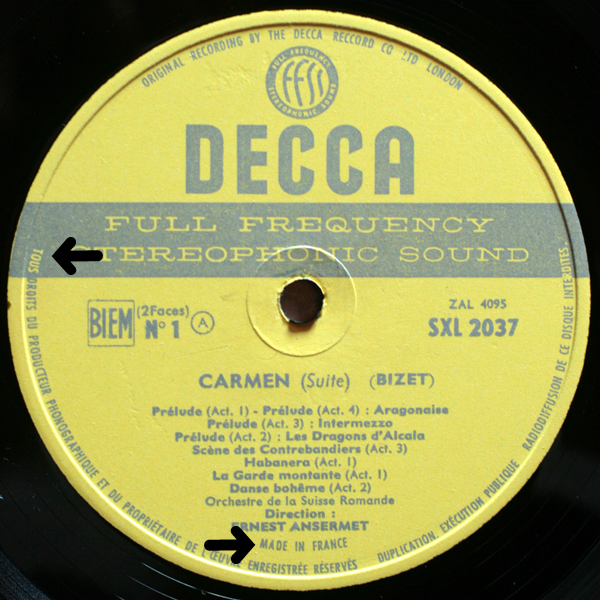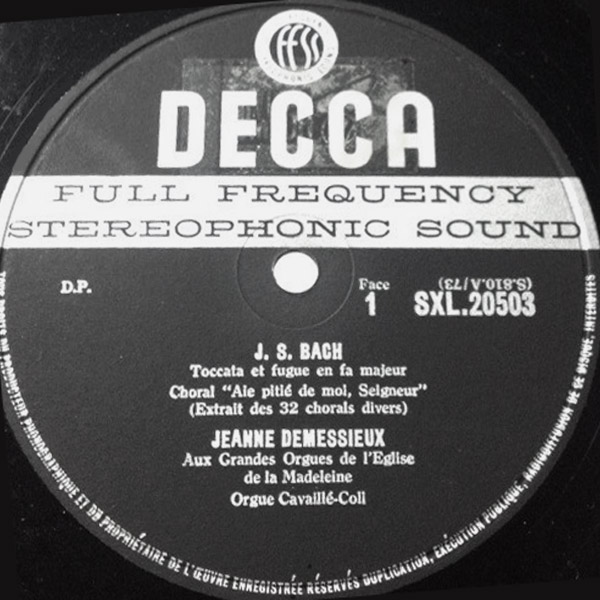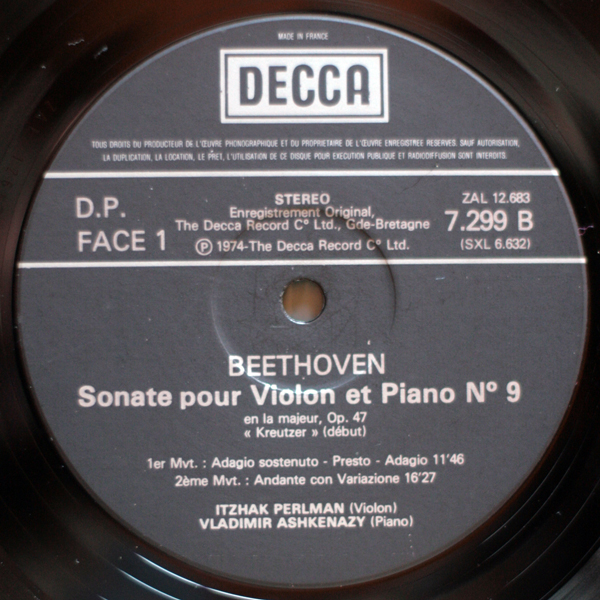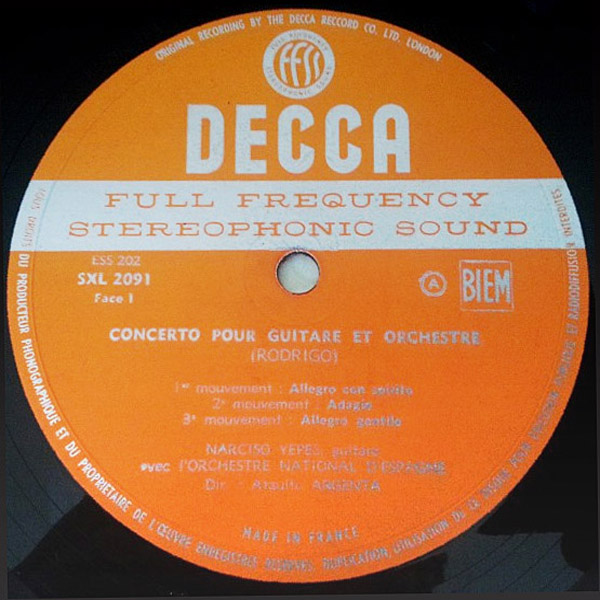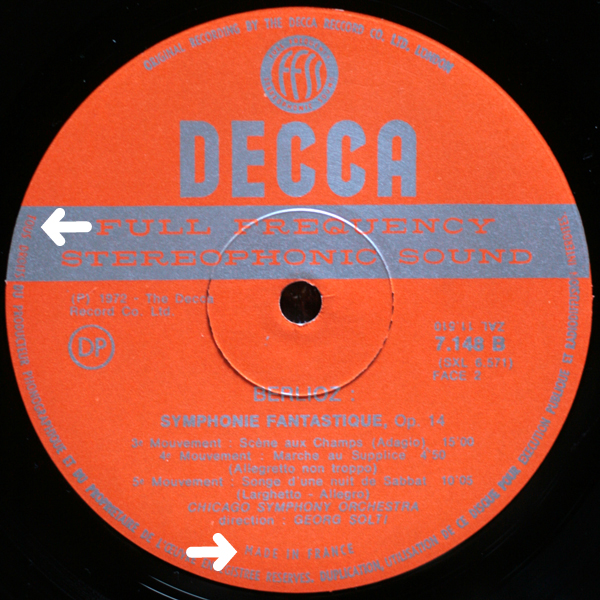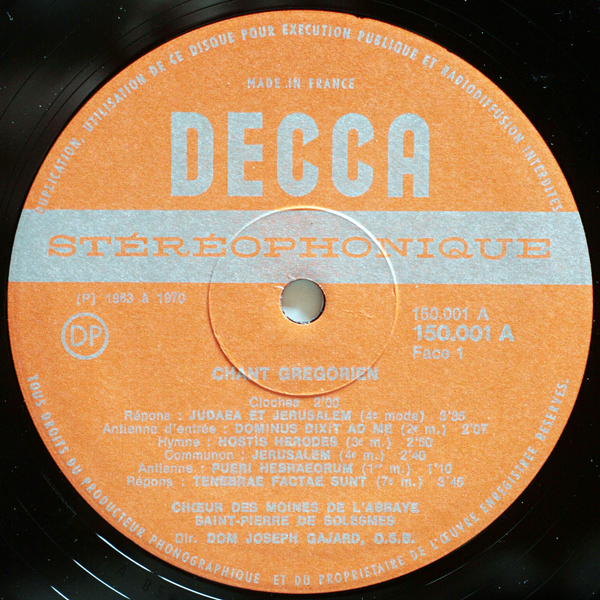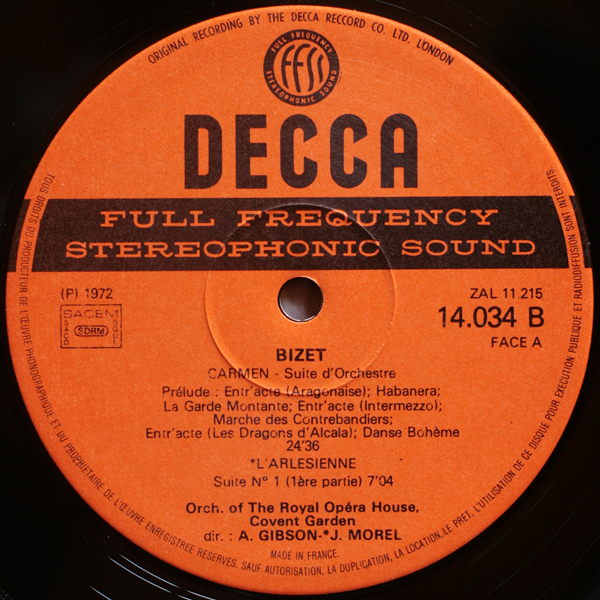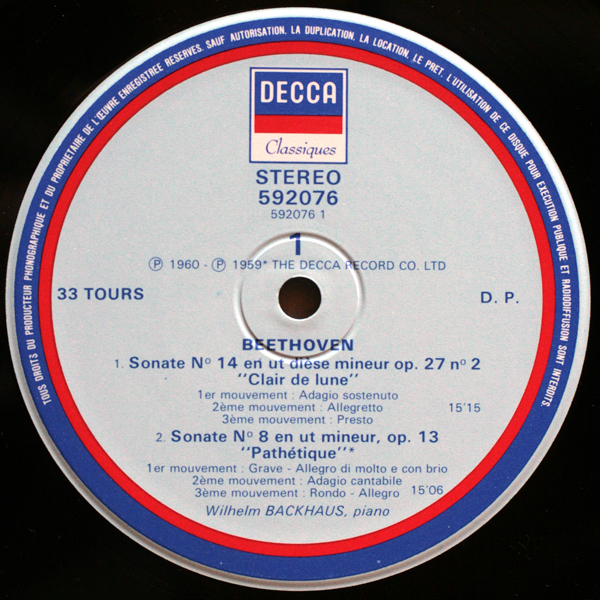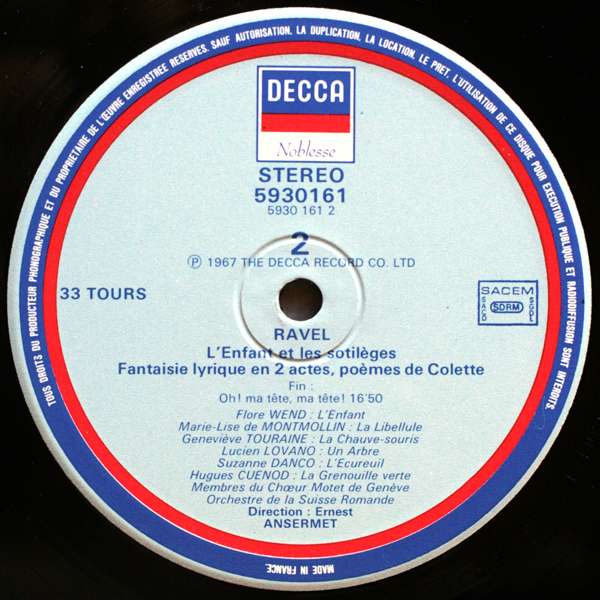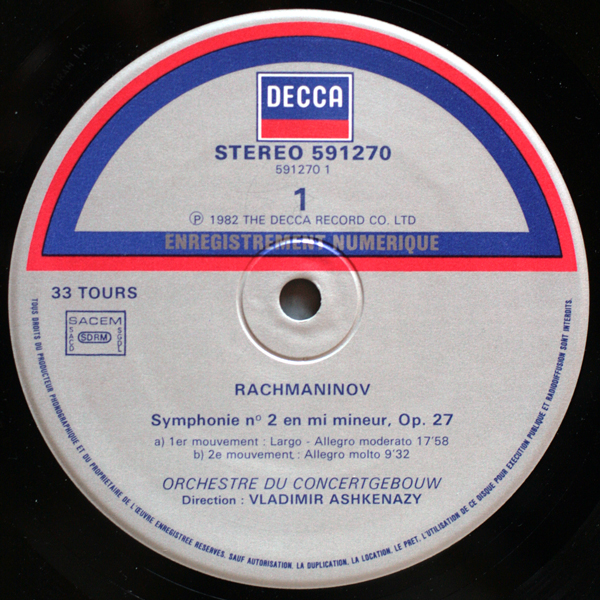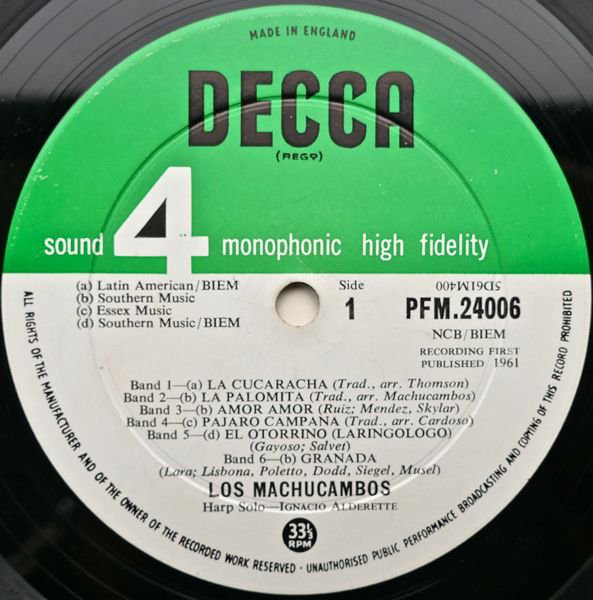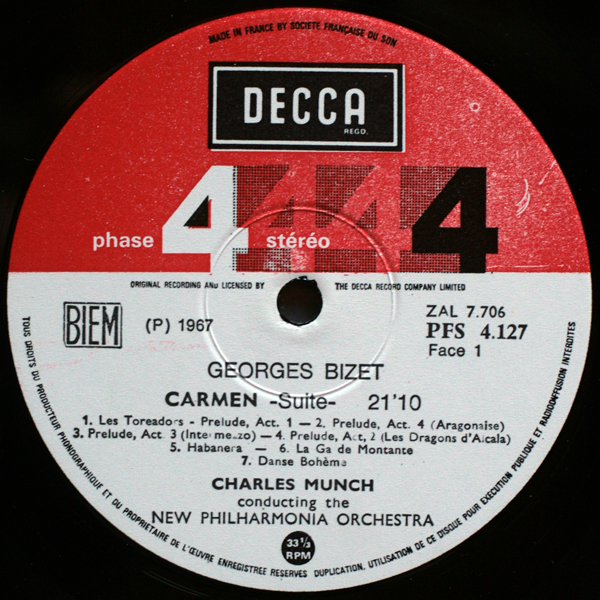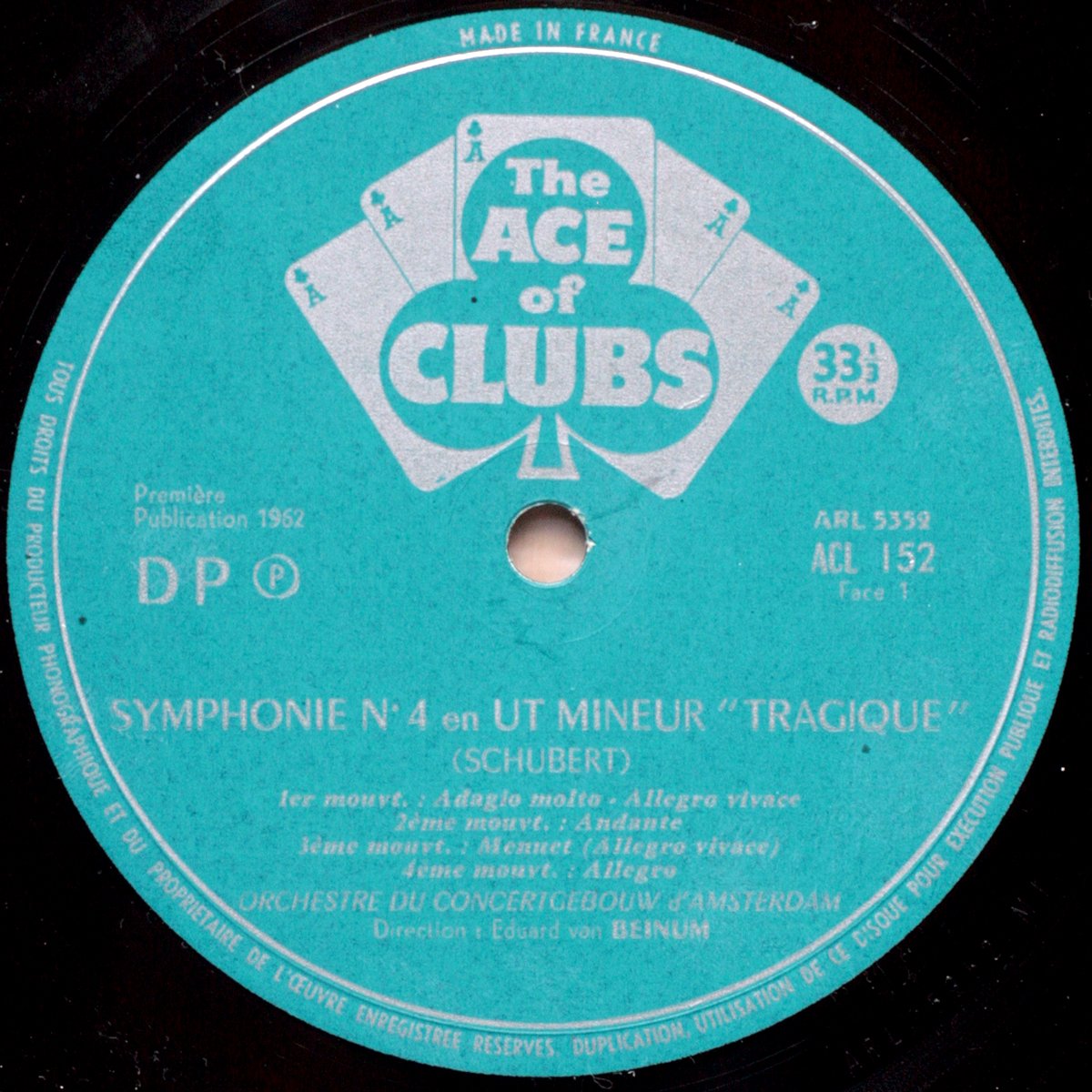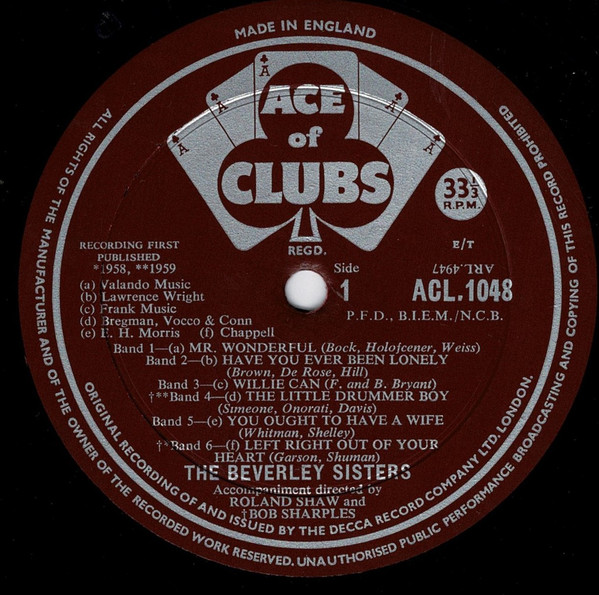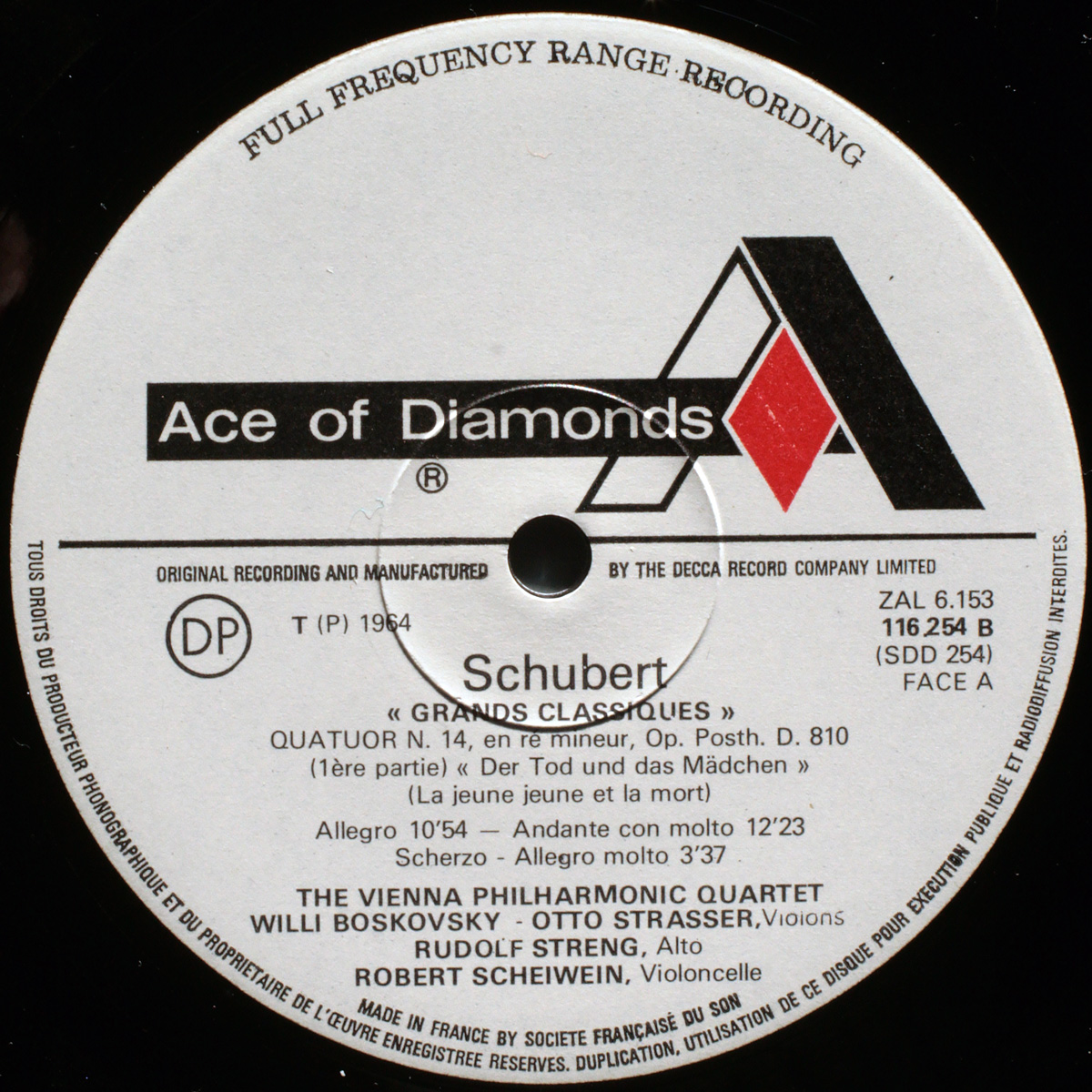Guide photographique des étiquettes des disques
Decca « Classics » France
Nomenclature des disques Decca France
Série LXT – « French Yellow »
La série Decca LXT a été lancée en 1950 et a été produite jusqu’en 1969, après quoi, toutes les nouvelles versions étaient uniquement stéréo. Elle comporte deux séries : LXT 2000 et LXT 5000. La série LXT2000, qui est la plus ancienne, va du LXT2501 au LXT2999, et la série LXT5000 va du LXT5000 au LXT5685.
La première étiquette, jusqu’au LXT 5118, est de couleur orange avec les lettres dorées pour tous les logos et textes. Elle est appelée « Orange Gold » ou « French Yellow ».
La deuxième étiquette est identique à la première, de couleur orange avec les lettres argentées pour tous les logos et textes. L’étiquette a été utilisée sur tous les disques mono LXT à partir du LXT 5119 et sur les rééditions des disques précédents. Celles-ci sont identifiées comme étant « Orange Silver » ou « French Yellow ».
La troisième étiquette est jaune avec des lettres argentées. Un profond sillon circulaire entoure l’étiquette, à environ 15 mm du bord, et les mots « Original Recording by the Decca Co. Ltd. Londres » sont imprimés sur le dessus de l’étiquette. Le logo Decca, également en argent, est imprimé en grosses lettres, avec le logo circulaire FFSS imprimé au-dessus et les mots « Full Frequency Stereophonic Sound » remplissant la bande argent de 10 mm qui traverse toute la largeur de l’étiquette. Celles-ci sont identifiées comme « WBg » (Wide Band groove).
The Decca LXT series was first launched in 1950 and were produced until 1969, after which, all new relases were stereo only. At Decca, mono LPs fall into two series: the LXT2000 and the LXT5000. The LXT2000 serie, which is the earliest, runs from LXT2501 up to LXT2999, and the LXT5000 serie runs from LXT5000 to LXT5685.
The earliest label, up to LXT 5118, is orange with gold lettering for all logos and text. This is listed as « Orange Gold » or « French Yellow ».
The second label is identical to the first, is orange with silver lettering for all logos and text. The label was used on all mono LXT records from LXT 5119 onwards and on-repressed copies of the earlier records. This is listed as « Orange Silver » or « French Yellow ».
The third label is yellow with silver lettering. A deep circular groove runs around the label, about approx. 15 mm from the edge and the words « Original Recording by the Decca Co. Ltd. London » are printed around the top of the label. The Decca logo, also in silver, is printed in large letters, with the FFSS circular logo printed above and the the words « Full Frequency Stereophonic Sound » filling 10 mmsilver band running full width across the label just below it. These are indentified as WBg (Wide Band grooved).
Série SXL – « French Dark »
La série Decca LXT a été lancée pour la première fois en 1958. Les premières étiquettes, utilisées dans toute la série SXL 2000, sont noires avec des lettres argentées. Un profond sillon circulaire entoure l’étiquette, à environ 15 mm du bord, et les mots « Original Recording by the Decca Co. Ltd. Londres » sont imprimés sur le dessus de l’étiquette. Le logo Decca, également en argent, est imprimé en grosses lettres, avec le logo circulaire FFSS imprimé au-dessus et les mots « Full Frequency Stereophonic Sound » remplissant la bande argent de 10 mm qui traverse toute la largeur de l’étiquette. Celles-ci sont identifiées comme « WBg » (Wide Band groove).
La deuxième étiquette a été utilisée de 1965 à 1968. Elle ressemble beaucoup à la première, mais le sillon intérieur n’est plus apparent et les mots « Made in England by the Decca Co. Ltd. Londres » remplacent les mots « Original Recording by the Decca Co. Ltd. Londres », qui sont imprimés sur le dessus de l’étiquette. Ce label a été utilisé sur certaines rééditions tardives de disques SXL 2000. Ceux-ci sont identifiés comme « WB » (Wide Band).
La troisième étiquette a été utilisée de 1970 à 1979. La bande argentée est réduite en largeur, le logo FFSS circulaire est supprimé et le logo Decca est remplacé par une case rectangulaire argentée avec Decca imprimé à l’intérieur. Celles-ci sont identifiées comme « NB » (Narrow Band).
Les plus anciens des nombreux enregistrements Decca WBg antérieurs à SXL 2111 ont une bordure bleue et blanche au dos de la pochette extérieure, avec les mots « Full Frequency ange Recording » imprimés en bleu dans les sections blanches et les mots « Full Frequency Stereophonic Sound » imprimés en bleu dans les sections bleues.
The Decca LXT series was first launched in 1958. The earliest labels, used thoughout the entire SXL 2000 series, are black with silver lettering. A deep circular groove runs around the label, about approx. 15 mm from the edge and the words « Original Recording by the Decca Co. Ltd. London » are printed around the top of the label. The Decca logo, also in silver, is printed in large letters, with the FFSS circular logo printed above and the the words « Full Frequency Stereophonic Sound » filling 10 mmsilver band running full width across the label just below it. These are indentified as WBg (Wide Band grooved).
The second label was used from 1965 to 1968. She looks very similar to the first, but the inner groove is no longer apparent and the words « Made in England by the Decca Co. Ltd. London » replace the words « Original Recording by the Decca Co. Ltd. London » text printed around the top of the label. This label was used on some late reissue SXL 2000 records. These are indentified as WB (Wide Band).
The third label as used from 1970 to 1979. The silver band is reduced in width, the circular FFSS logo is removed and the Decca logo is replaced with a silver rectangular box with Decca printed inside. These are indentified as NB (Narrow Band).
The earliest of many of the Decca WBg records prior to SXL 2111 have a blue and white border on the reverse of the outer sleeve with the words « Full Frequency ange Recording » printed in blue whithin the white sections and the words « Full Frequency Stereophonic Sound » printed in blue whithin the blue sections.
Série SXL – « French Orange »
La première étiquette de cette série sont orange avec des lettres argentées. Un profond sillon circulaire entoure l’étiquette et les mots « Original Recording by the Decca Co. Ltd. Londres » sont imprimés sur le dessus de l’étiquette. Le logo Decca, également en argent, est imprimé en grosses lettres, avec le logo circulaire FFSS imprimé au-dessus et les mots « Full Frequency Stereophonic Sound » remplissant la bande argent de 10 mm qui traverse toute la largeur de l’étiquette. Le texte “Tous droits …” débute à l’intérieur. Le texte “Made in France” en bas. Celles-ci sont identifiées comme « WBg » (Wide Band groove).
La deuxième étiquette ressemble beaucoup à la première, mais le sillon intérieur n’est plus apparent. Le texte “Tous droits …” débute à l’intérieur. Le texte “Made in France” en bas. Ceux-ci sont identifiés comme « WB » (Wide Band).
La troisième étiquette ressemble beaucoup à la seconde. Le texte “Tous droits …” traverse la bande argentée. Le texte “Made in France” en bas. Ceux-ci sont identifiés comme « WB » (Wide Band).
La quatrième étiquette est orange avec des lettres argentées. Un sillon circulaire entoure l’étiquette. Le logo FFSS disparaît. La bande traverse toute la largeur de l’étiquette. En haut, nouveau texte “Diffusion, utilisation …”. débute à l’intérieur. Le texte “Made in France” est en haut.
The first label of this series are orange with silver letters. A deep circular groove runs around the label and the text « Original Recording by the Decca Co. Ltd. London » are printed on the top of the label. The Decca logo, also in silver, is printed in large letters, with the circular FFSS logo printed on top and the words « Full Frequency Stereophonic Sound » filling the 10 mm silver band that runs the full width of the label. The text « All Rights … » begins on the inside. The text « Made in France » at the bottom. These are identified as « WBg » (Wide Band groove).
The second label is very similar to the first one, but the inner groove is no longer apparent. The text « Tous droits … » starts inside. The text « Made in France » at the bottom. These are identified as « WB » (Wide Band).
The third label is very similar to the second one. The text « All Rights … » runs across the silver band. The text « Made in France » at the bottom. These are identified as « WB » (Wide Band).
The fourth label is orange with silver letters. A circular groove surrounds the label. The FFSS logo disappears. The band runs across the entire width of the label. At the top, the new text « Diffusion, utilisation … ». starts inside. The text « Made in France » is at the top.
Série LX
10” – 33 tours – Mono
LX 3xxx
Série LXT
12” – 33 tours – Mono
LXT 2xxx
LXT 5xxx
→ Decca LXT Series Reference Listing
Série SXL
12” – 33 tours – Stéréo
SXL 2xxx
SXL 6xxx
→ Decca SXL Series Reference Listing
Série SET
12” – 33 tours – Stéréo
STE 2xx
STE 201 à 628
Not issued: SET 202-3, 235, 337, 351, 376-8, 405, 430-1, 411-2, 453, 456, 476, 489-1, 496, 522, 536+7, 558, 564, 599-600, 603-5, 620-1, 624, 627
Série Ace of Clubs
12” – 33 tours – Mono ou Stéréo
ACL1 à 324: Classical music
ACL 801 à 920: Easy listenning, dance, folk
ACL 1001 à 1273: Jazz, blues and early rock music
Sources :
http://lee.classite.com/music/Decca-lps/decca-sxl-intro.htm
Rare classical record price guide – Barry Browne
https://www.discogs.com/fr/
Collection personnelle

